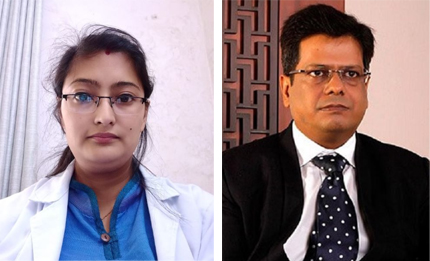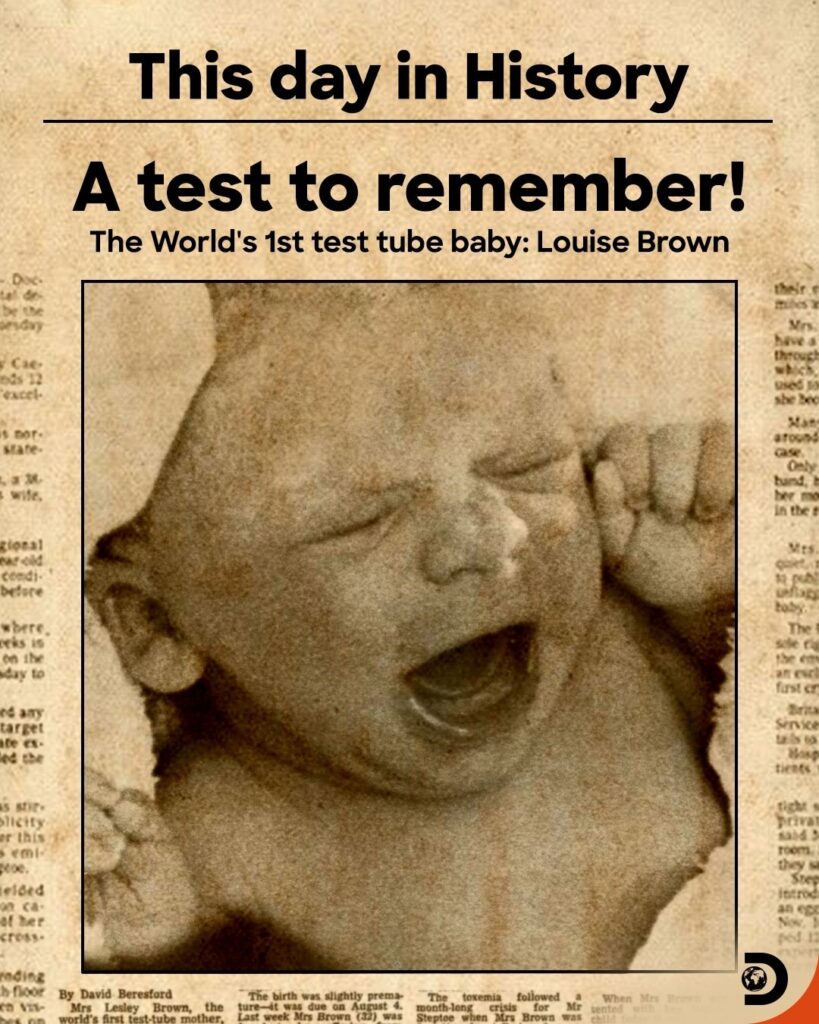The World’s first IVF Baby – A Medical Marvel | IHR’s contribution in the field of ART

Dr. Rojina Manandhar
Fellow Infertility Specialist
Dr. Deepak Goenka
Director, Institute of Human Reproduction
IVF Specialist
IVF is a process in which embryos are formed by mixing sperm and oocyte outside the human body and transferring those fertilized embryos inside the woman’s uterus. Today, IVF has become the mainstream medical treatment for infertility. Hundreds and thousands of children are conceiving through this procedure every day.
Introduction – the World’s first IVF Baby
Louise Brown was the result of the first successful IVF, which is considered to be among the most remarkable medical breakthrough of the 20th century. She was born on 25th July 1978 at Oldham and District General Hospital, Manchester, England. She was born to the lucky parents Lesley and Peter Brown at 11:47 pm, Tuesday by caesarean section and weighed 5 pounds, 12 ounces (2.608 kg) at birth.
It was the hard work of gynaecologist Patrick Steptoe and physiologist Robert Edward who made this miracle happen. As the birth of Louise Brown brought joy to the whole world, they added joy in between her name and named her Louise Joy Brown.
The Struggle Story
Lesley and Peter were from a small city Bristol. Peter Brown worked as a driver for British Rail. He has two daughters from a previous marriage Beverly and Sharo.
Before giving birth to Louise, Lesley Brown had suffered nine years of infertility due to blocked tubes. Bristol clinician, Dr Rosalin Hinton explained to the couple that some experimental IVF procedure was going on in Manchester but the chance of success is one in a million. They were so desperate for a child that they travelled 180 miles from Bristol to Manchester and met with pioneers Dr. Patrick Steptoe and Robert Edward in 1976.
Physiologist Robert Edward who did PhD at The Institute of Animal Genetics, Edinburgh University had a special interest in studying human oocytes and fertilization in vitro. He used to obtain wedges of ovaries post-surgery for PCOS from a gynaecologist (Molly Rose) for this purpose. In Royal Society of Medicine, he met with Dr. Patrick Steptoe who was a good laparoscopic surgeon. Since 1968 they started working together in Oldham and District General Hospital. Later they did a Lab setup at Kershaw’s Hospital with nurse Jean Purdy.
The Success Story
After 10 years of working together and a total of 112 transfers, there came the first successful IVF baby who was Louise Brown. They did laparoscopic oocyte retrieval in a natural non-stimulated ovulatory cycle of Lesley. Only one oocyte was collected and was transferred in 8-cell stage in November 1977. The result came out to be positive and the fetus was seen in USG. Amniocentesis was done which was normal. She developed pre-eclampsia during pregnancy and a caesarean section was done at 38 weeks 5 days on July 25, 1978.
The birth of Louise Brown was reported throughout the World with a major headline. It was the most awaited birth in 2000 years but also raised various legal and ethical questions.

Louise Brown’s younger sister, Natalie was also through IVF in 1982. By that time, she was the 40th in the world. In May 1999, Natalie became the first IVF baby to give birth to a child on her own. Louise Brown also conceived naturally and in December 2006 gave birth to a baby boy, Cameron. These proved that IVF babies can conceive naturally. Robert Edwards received the Nobel Prize in 2010 for the development of IVF which was one of the most remarkable breakthroughs of the 20th century.
India’s First IVF Baby
There is controversy regarding India’s first IVF baby. Durga/ Kanupriya Agarwal born on October 1978, Calcutta with the hard work of Indian scientist and physician Subash Mukherjee, is India’s first IVF baby but was recognized later. For long, Harsha Chawda born in August 1986, Mumbai by Dr. Indira Hinduja was considered as India’s first IVF baby.
North-East India’s First IVF Baby
The first IVF baby of North East India was delivered on 7th July 1995 by Dr. M. L. Goenka in the Institute of Human Reproduction (IHR) popularly known as Goenka Hospital (Goenka Nursing Home), Guwahati.
IHR Guwahati is backed by highly dedicated IVF specialists and world-class superlative technology in the field of Assisted Reproductive Technology (ART), Advanced Endoscopic Surgery & Genetic Engineering.
IHR’s achievements have been remarkable since the 1980’s when this whole ART science was very much in the infantile stage around the world. IHR is proud to be at the forefront of infertility & endoscopy management, as evidenced by the many “firsts” and medical breakthroughs in the entire North East India.
A few of them include:
- 1982: Started Laparoscopy
- 1983: Started Hysteroscopy
- 1984: Started Microsurgery in Reproduction.
- 1995: First IVF (Test Tube Baby) in North East
- 1996: Delivered First ICSI Test Tube Baby
- 1997: Opened first Semen Bank.
- 1998: Started LASER Assisted Hatching.
- 2008: Delivered and successfully sent home the smallest baby of NE India on 14/10/08; baby girl weighing 700gms
- 2009: Successful delivery of a baby with the help of PGD to a parent who had recurrent pregnancy loss.
- 2019: Started using PRP in cases with thin Endometrium & Poor Ovarian Reserve first time in the entire North East India
- 2021: First time in North East India a newer and reliable non-invasive genetic screening test like NICS (Non-Invasive Chromosomal Screening) was made available by IHR
Conclusion
Though the journey to 1st IVF baby was tough, the birth of Louise Brown has offered a ray of hope to millions of childless couples across the world. After her, many infertile couples are conceiving every day through IVF and are enjoying the happiness of parenthood.

.png) (+91) 9864103333
(+91) 9864103333 (+91) 9435502020
(+91) 9435502020



